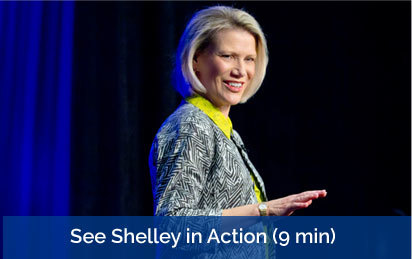Beth Beutler's Blog, page 22
November 14, 2016
25 Business Lessons from Romans 12
Ancient Wisdom for Modern Professionals
1. Continually learn and refresh your mind.
2. Be realistic about your strengths and challenges.
3. Don’t make impulsive decisions.
4. Focus on using your gifts well and team up with people who have different talents.
5. Be sincere.
6. Do the right thing. Be ethical.
7. Be devoted to your clients and customers.
8. Honor other businesses above your own.
9. Be zealous and passionate about what you do.
10. Be optimistic and forward looking
11. Be patient in the hard or lean times.
12. Build on a foundation of values.
13. Share with others.
14. Practice hospitality.
15. Bless your haters.
16. Rejoice with others who succeed.
17. Be compassionate with those who fail
18. Practice cooperation, not competition.
19. Don’t be arrogant.
20. Be willing to network with people outside your industry.
21. Treat all clients and customers, small or large, with excellence and dignity.
22. Don’t take revenge.
23. Develop a good reputation.
24. As much as in your power, live at peace with everyone else.
25. Overcome evil with good.
Bonus: Remember Who the true Boss is.

November 10, 2016
HOPE Hint
November 7, 2016
A Project Management Lesson from a 6-Year-Old
Believe. Broaden. Break. Be. Bless.

Credit: Instagram.com/essentiallywandering
Ask an overwhelmed professional why they are stressed, and you are likely to hear, “I have so much to do!”
When a large project looms, it’s hard to comprehend the finish line. Is it ever going to be done? Sometimes the obstacles seem insurmountable.
The next time you feel that way–be inspired by a 6-year-old.
The photo above was taken by the mom of three boys. She and her husband, who recently retired from military service (thank you!) are embarking on an adventure of living in an Airstream trailer and traveling the country. At one of the stops they found a beautiful rocky beach, but with access to the water was difficult.
One of her boys didn’t let the rocks stop him. Oh, being a boy, you might be guessing that he just climbed right over them. (That’s fun, too.) But instead, he methodically moved one rock at a time, clearing a sandy access path to the beach.
“He kept at it and moved every. single. rock by hand. We had come down to the beach because I was so overwhelmed at the projects we are drowning in with the#airstream and this transition of #moving and had hit a breaking point. Watching him was a real lesson in taking our challenges one rock at a time and before we know it, we have moved mountains.
The next day the ocean was full of people enjoying the water there where they could not before.” – Karen Roush
This wasn’t easy. We aren’t talking about pebbles here, and the path he cleared is not just a foot or two long.
So what can we learn from a six-year-old about tackling big projects?
Believe it can be done. With childlike faith, he believed he could make a path to the water. He didn’t think, “I’m six. There’s no way I can get down to the water.” When a large project looms, remind yourself that you are capable of accomplishing it.
Broaden your options. Sure, climbing over the rocks is an option. But it’s not that practical and can be painful. E figured out that with some work, a long-term better option could be made available.
Break it down. E moved one rock at a time. He wasn’t capable of carrying a bunch at once. With many projects, breaking them down into manageable tasks is a very helpful step.
Be diligent. One rock at a time, steady over time. He kept at it. Consistently doing the tasks needed for the larger project will reveal results in due time.
Bless others. Not only did E clear a path for himself, his work helped the rest of his family. And they left the path intact. They got the joy of watching other people take it down to the beach where they could more fully interact with the water. I bet most of them wouldn’t have figured that a six-year-old cleared the path for them. Who knows how many more will enjoy it after they leave? Think of the bigger impact of the project on your customers, clients, or those who follow your platform. Don’t underestimate the positive ripple effect it can have.
So what project do you have looming? Believe you can do it. Broaden your options. Break it down. Be diligent. And bless others. You have no excuses unless you are younger than six.
Special thanks to Essentially Wandering for permission to use this photo and their contribution to this blog post.

November 3, 2016
Client Spotlight: Shelley Row

Shelley Row works with forward-thinking managers and leaders who must make fast, insightful decisions in the face of uncertainty and rapid change. Shelley’s original research through 77 executive interviews revealed the secret to effective decision-making: Use information and intuition. That research is validated through neuroscience.But Shelley’s work is grounded in more than just her research. Her life experiences taught her to think, feel, and act…and it made all the difference.
How HOPE Unlimited supports Shelley:
WordPress blog posting support
MailChimp email marketing/list management
Social media plan implementation
Creation of social media images and a social media library
Workflow suggestions
What Shelley says about HOPE:
Beth is amazing. She reads, synthesizes, and summarizes my work so that it can be shared with others. She manages and publishes my newsletter and makes sure it is distributed through social media channels. If it weren’t for her excellent work, far fewer people would have been engaged. She’s made my life easier and my work more robust. Thank you, Beth!
What HOPE says about Shelley:
Shelley is an interesting and well-spoken writer and speaker. I enjoy learning new things simply by reading her material! She’s open to my ideas, respects my gifts, and makes efforts to work ahead which smooths everyone’s workflow. She’s smart, helpful, and resilient. I’m glad we’re part of her team!
Learn more at ShelleyRow.com.

October 31, 2016
How to Give an Effective Apology
Take responsibility when you need to
“First, I need to apologize. We understand what it means to work on a deadline, and we’ve made that difficult for you.”
I was working on an interview-style article that required a good deal of input from someone else, in this case, two business partners*. While they had agreed to be featured in the publication, they were having a challenging week and were not able to mentally focus on gathering the information I needed.
I sent a gentle reminder and received a gracious response. Instead of an excuse or request to give them some more time, I received what was essentially a professional apology, the words you read above. I was impressed and am happy to report the article went well and turned out great.
There are times in your professional life (personal too!) when you are going to have to apologize. Hopefully, your reason for an apology isn’t that you’ve purposely behaved like a jerk. But overwhelmed professionals can unintentionally cause stress to others. Maybe you have misplaced something someone else needs, or have forgotten to do something, or are feeling pulled in all directions and get snippy with a colleague. In those cases and more, a professional, sincere apology can go a long way toward keeping the relationship strong.
In the scenario above, this duo handled the apology in a way that provides an example for others. Let’s take a look at why it worked
They immediately acknowledged the need to apologize. There was no sidestepping the issue (they had broken the expected rhythm for the project) but they took responsibility for the delay. (This wasn’t a case of, “I’m sorry someone/you were offended” which puts the responsibility on the other person.)
They articulated exactly what stress they caused. “We understand deadlines, and we’ve made this difficult for you.” This wasn’t just an off-the-cuff “Sorry this is late.” It took my feelings into consideration.
They provided what I needed. In this case, they were able to not only apologize, but include the material I needed, which moved the project along. While that may not always be possible, it’s the ideal way to make amends. At the very least, giving a hard deadline for when the material would have been ready would have also been acceptable.
Apologies aren’t easy. We all want to think we are consummate pros who do all things right. But that is not realistic. You WILL have to apologize at some point. Don’t make things worse by not giving an apology well. We have plenty of poor examples in popular culture. Don’t be one of them.
*scenario has been changed to protect privacy

October 27, 2016
HOPE Hint: How to Clean Out a Desk Drawer
October 24, 2016
How to Get Along with the Colleague Who is Faster than You
Techniques for navigating swift waters in business relationships
By Staff Sgt. Timothy Chacon (https://www.dvidshub.net/image/906682) [Public domain], via Wikimedia Commons
A swift water rescue team fans out into a V to navigate the fast flowing rapids. The leader carefully checks for unseen holes. The others slowly walk forward, providing a human barrier for the current to rush around. In the center, an area of peace is created, and the team members rotate opportunities to walk in it to rest and replenish for a few minutes.There’s a technique to handling rushing waters to benefit the team and accomplish the goal. And there are techniques that can help you navigate interactions with people who work faster, and differently than you do.
I remember a situation* where a colleague was coming into town for a few days. Our work styles were different. Mine includes a plan for the day, allowing space for highly creative spurts in balance with repeated implementation of administrative tasks. I’m a pretty fast worker myself, but I’m also learning to embrace slower, reflective moments and tease out time to think.
My colleague moves faster than I do. They’re up early and run on high energy most of the day, responding to things as they come up, eager to tick off the to-do list, and crashing early in the evening. They think on the run and tend to like to be in charge, much like the swift water you see in areas of heavy rapids. How were our work styles going to work for the days we worked together?
One key–the same key used by swift water rescue teams–is preparation and mindset. I reminded myself to:
Anticipate. I knew enough about the person to know what to expect. This helped me in thinking through an agenda/itinerary for the project since I was the host.
Acclimate. For a few days, my workflow was simply going to be different. I had to adjust. I could not expect to do everything the way I normally would.
Appreciate. I asked myself, “What three blessings there would be in working with this individual more closely than usual?” What came to mind was creativity. Getting things done. Laughter. I could choose to focus on those things even prior to their arrival.
Abdicate. I chose what battles would be worth standing firm for, and what I could let go of. I knew that while my colleague would appreciate my being a good host, they would NOT want to be treated like a child with no say in the schedule. So I planned opportunities for choices. For example, I’d narrow down some lunch choices to two or three, present them, and ask them to choose where they’d like to go for lunch. A plan, but not a rigid one, was just right.
Allocate. I thought through their visit and developed an itinerary that they would enjoy, allocating certain time blocks to meetings with others or particular projects that would also balance my need for some project time unrelated to their project. By making this itinerary ahead of time, I had a plan that could make us most productive and give us both breathing space.
Activate. I made a basic plan for their visit and worked it. I made sure we had a list of “must do’s” and attacked those we could finish the first day, so they would feel quick wins about the trip.
A swift water team regularly trains and learns to read the river. You WILL experience a swift water situation at work eventually. What can you do to prepare now?
*As is my custom, while many of my illustrations have elements based on my real life experiences, I reserve the right to mix and modify details and enhance with some fictional elements in order to protect privacy and prevent any recognisable association to specific people or companies.

October 20, 2016
Steps to Developing a New Habit
Special thanks to Start Blogging Online for Guest Posting!
If your level of productivity is low and you decided to make an improvement in this area, the sure way to make this successful is for you to practice new habits that would let you do more things. Applying positive changes in your behavior and actions would not only benefit your productivity, but all other things that concern it too.
What’s fascinating about us humans is that we turn something into a habit when we keep on doing it. Our body and mind gets used to it and it becomes subconscious in the long run that this is the way we respond or react to things without really paying attention to it. Since these habits have already become part of yourself, it would be hard to remove them in an instant. Sadly, that also includes the not so good ones.
However, no matter how difficult the process is, it can be done if you are committed and focused on your goal. You could start practicing good things that could turn into habits after some time. Your productivity would improve little by little and it would turn great after a while.
Our eye-catching infographic shows you steps that you can take in order to develop these new habits that will lead to the improvement of your productivity.
Here’s the infographic and we hope you enjoy it!
Share this Image On Your Site
Please include attribution to http://startbloggingonline.com/ with this graphic.
[image error]
S

October 17, 2016
How to Hot-Desk Effectively
Working in more than one space: Is it for you?
How important is it to you to have your own desk or work space?
There’s an interesting slide show on Entrepreneur about “hot desking” – the concept of employees working in multiple workspaces, moving locations instead of “owning” one desk. The journalist experimented with the concept for a five day period and reported her findings.
Many professionals are getting used to working in various work spots, whether at company headquarters, coffee shops, airport lounges or on airplanes (one of my clients loves her “in-flight” productivity.) For years, when I worked in traditional offices, I either had a cubicle, a desk of my own, or (most ideal) my own office. I’ve found that I like having space I call “my own.”
Now that I run my own business, I no longer have a “workspace” elsewhere to commute to. However, my home office acts as my main location, and several times a month, I also work at local coffee shops. As a board member for a non-profit organization whose lovely office happens to be in town, I’ve been told I’m welcome to come “set up shop” anytime I temporarily want to be in the presence of people (and the office dog.)
Overall, I find that my home office is the best space for productivity. But getting out of there is valuable too, so here are four tools or mindsets I’m finding helpful to take along when I plan to work away from a permanent office space:
Creature comforts. In my computer bag, I keep an inspiring pouch, a coaster, and a small imitation candle. I often set these up on the table to personalize the space for the time I’m there. (I also keep a large scarf to use as a lap blanket in shops that keep AC high.)
Earphones. This is probably the single most important tool (other than my Chromebook.). I like to be in the presence of people and energy from time to time, but am easily distracted by conversations around me. Earphones allow me to listen to my own playlists and drown out specific conversations.
Playlists. I currently use Spotify as my main source of music. I’m learning to enjoy music more–I tend to not think about turning it on. I have two primary playlists–one for quiet productivity and relaxation, and one for upbeat productivity and working out. Depending on the types of tasks I am doing, I can play the appropriate playlist.
Associations. I’ve gotten to know which type of work I can do best in “third space” locations vs my home office. So I generally save some of that type of work to do in batches when I am mobile. Right now, creating images, editing/refreshing content, and screening Gmail seem to be good work for third spaces. Processing administrative tasks like scheduling appointments, implementing social media updates or coordinating projects seems to be better handled at my home office.
With these four tools and mindsets with me, I can adapt any space to be a productive one. For long periods, I do prefer my own office, but versatility and flexibility are good traits for professionals to develop. So why not give “hot desking” a try this week?
Question: Does hot-desking interest you? You can leave a comment by clicking here.








![By Staff Sgt. Timothy Chacon (https://www.dvidshub.net/image/906682) [Public domain], via Wikimedia Commons](https://i.gr-assets.com/images/S/compressed.photo.goodreads.com/hostedimages/1477469017i/20953774._SX540_.jpg)






